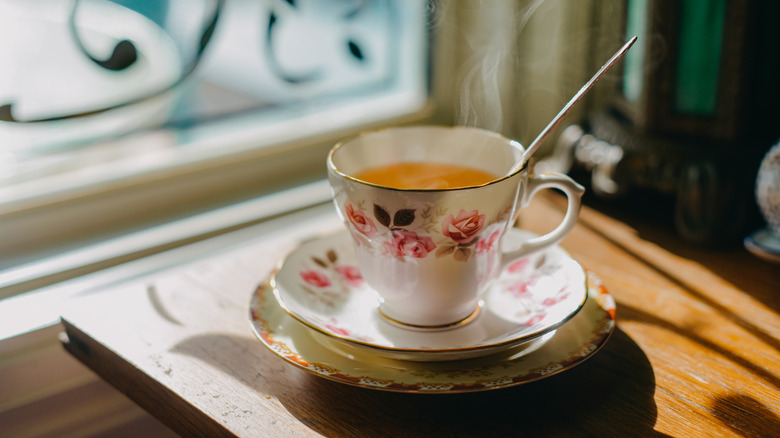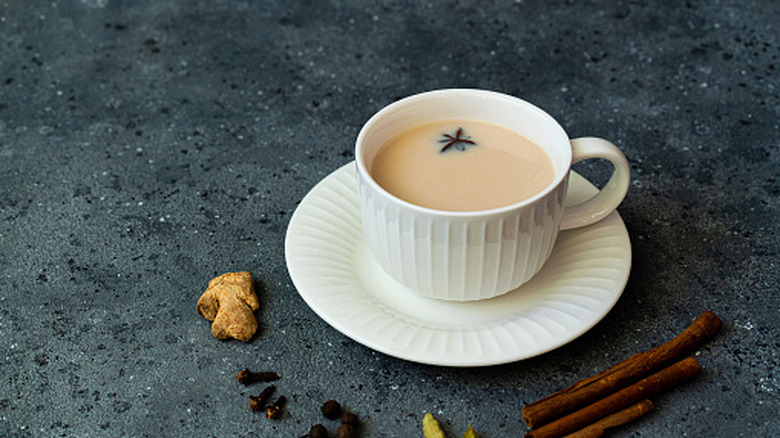There's A Right Time To Add Milk To Your Tea
Tea: comforting, classic, and deceptively simple — until you start talking about how to make it. One of the most heated debates? When to add the milk. While tradition insists tea comes first, new research says otherwise, at least for those living in hard water areas. Adding milk first, as it turns out, might be the secret to a smoother, more flavorful cup — and there's science to back it up.
The difference lies in tannins, the compounds responsible for tea's distinctive taste. These naturally occurring elements shape the brew's flavor and texture, but their interaction with hard water can lead to a less-than-stellar cup. Adding milk first can stop this reaction in its tracks, giving the tannins space to shine. So whether you're savoring high tea or afternoon tea — and no, they are not the same thing – milk-first might be worth a try, especially if your water is on the harder side.
This isn't the first time tea drinkers have brewed up a debate. While not as endlessly debated as whether a hot dog is a sandwich, the milk-first method has stirred up its fair share of opinions. For soft water areas, the difference may be negligible, but for hard water zones, it's the kind of small tweak that can make a big impact.
Milk before tea: a brewing revolution for hard water drinkers
For tea drinkers in hard water areas, the milk-first method isn't just tradition-busting — it's science at work. Hard water's minerals, like calcium and magnesium, interfere with the tea's tannins, flattening its flavor and robbing the brew of its complexity. Milk proteins step in to neutralize these minerals, ensuring a richer, more satisfying sip. It's a simple fix, but one that changes the chemistry of your brew.
Tannins, the compounds often blamed for tea's astringency, play a starring role here. They're what give tea its depth and character. And your tea isn't the only place tannins take on a role — you'll find them in all your wines, too. But when hard water gets involved, tannins can solidify too quickly, leaving the tea lifeless. Milk-first preparation interrupts this process, preserving the tannins so they can do what they do best — make your tea taste like tea.
For soft water drinkers, the milk-first approach might not make as big of a splash. Without those pesky minerals, the order of operations comes down to preference, ritual, or even habit. That said, some soft water tea lovers swear by the milk-first method, insisting it creates a silkier, more satisfying sip. Whether it's science or just psychology, one thing is clear — there's no universally "right" answer.
Ultimately, there's no one-size-fits-all answer to the milk debate. Whether it's a chemistry lesson or a cherished ritual, tea is all about the experience. Milk-first or tea-first, what matters most is taking the time to enjoy it. Because let's be honest: there's no wrong way to appreciate a good cup of tea.

